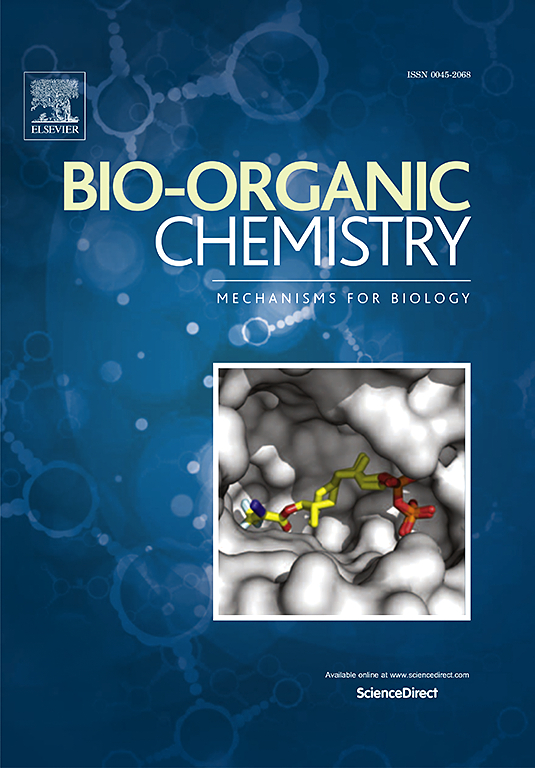Synthesis and antitumor activity of a novel class of covalent inhibitors of EGFR with 2-indolone backbone
IF 4.5
2区 医学
Q1 BIOCHEMISTRY & MOLECULAR BIOLOGY
引用次数: 0
Abstract
The percentage of people with lung cancer remains high. Given that the majority of NSCLC patients are currently on third-generation clinical agents, the search for a class of highly effective and low-toxicity inhibitors is critical. Hence, in the present study, 24 compounds were synthesized by scaffold hopping with 2-indolone as the parent nucleus. The anti-tumor activity against two human non-small cell lung cancer cell lines (A549 and H1975) was evaluated in vitro using Osimertinib as a positive control drug. Results demonstrated that compound T16 (IC50 = 0.386 ± 0.032 μM) exhibited comparable anti-tumor activity to Osimertinib (IC50 = 0.098 ± 0.006 μM). Moreover, T16 showed a twofold higher selectivity than Osimertinib in normal HEK293 cells. Subsequent studies confirmed that compound T16 inhibited colony formation in both H1975 and A549 cells at concentrations consistent with the initial screening assay results. Additionally, it suppressed migration of H1975 cells, and induced apoptosis while significantly reducing phosphorylation levels of EGFR and AKT proteins. In vivo experiments demonstrated effective tumor suppression after 20 days’ treatment with compound T16 in CDX model. RNA sequencing analysis further revealed that compound T16 induced expression of HMOX1 leading to ferroptosis trigger. Additionally, molecular docking results indicate that T16 is chimerized into the mutant protein pocket in an ‘arch-bridge’ conformation.

求助全文
约1分钟内获得全文
求助全文
来源期刊

Bioorganic Chemistry
生物-生化与分子生物学
CiteScore
9.70
自引率
3.90%
发文量
679
审稿时长
31 days
期刊介绍:
Bioorganic Chemistry publishes research that addresses biological questions at the molecular level, using organic chemistry and principles of physical organic chemistry. The scope of the journal covers a range of topics at the organic chemistry-biology interface, including: enzyme catalysis, biotransformation and enzyme inhibition; nucleic acids chemistry; medicinal chemistry; natural product chemistry, natural product synthesis and natural product biosynthesis; antimicrobial agents; lipid and peptide chemistry; biophysical chemistry; biological probes; bio-orthogonal chemistry and biomimetic chemistry.
For manuscripts dealing with synthetic bioactive compounds, the Journal requires that the molecular target of the compounds described must be known, and must be demonstrated experimentally in the manuscript. For studies involving natural products, if the molecular target is unknown, some data beyond simple cell-based toxicity studies to provide insight into the mechanism of action is required. Studies supported by molecular docking are welcome, but must be supported by experimental data. The Journal does not consider manuscripts that are purely theoretical or computational in nature.
The Journal publishes regular articles, short communications and reviews. Reviews are normally invited by Editors or Editorial Board members. Authors of unsolicited reviews should first contact an Editor or Editorial Board member to determine whether the proposed article is within the scope of the Journal.
 求助内容:
求助内容: 应助结果提醒方式:
应助结果提醒方式:


